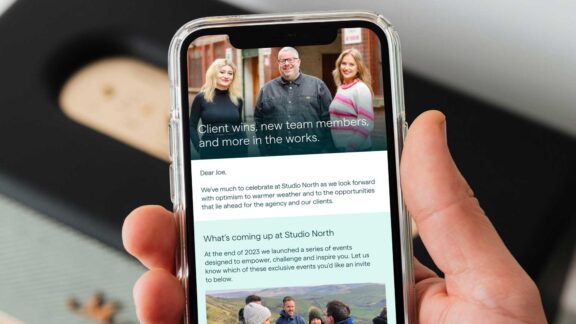What’s in a name? Well, quite a lot. A well-thought-out company name is a powerful and essential tool and can directly affect the success or failure of your product.
A good brand name should be memorable and meaningful and make an emotional connection with the audience, and it should also clearly differentiate you from your competition. Your brand name is a key part of your brand identity.
There are many different approaches to creating and selecting a name, each with its pros and cons.
We’ve pulled together six of the most common ways to name your brand. Check them out – it may give you food for thought!
Descriptive
These kinds of names are very much in the ‘does what it says on the tin’ category but are helpful when you need people to understand your proposition quickly. Have you ever wondered what We Buy Any Car’s core service is? This is particularly common amongst online-only brands, as they’re usually drawn from a range of common keywords that the brand wishes to compete with. There are also historical examples, particularly within the hospitality industry – Holiday Inn and Travel Lodge are two key examples.
However, whilst descriptive names can quickly convey a company’s offer, these names can have some drawbacks, as they’re not particularly unique. This can pose a problem from both a trademarking and SEO perspective. Another potential drawback can be that if your name is too specific it can have the potential to limit your brand growth – for example, if a plumbing company wants to expand its offering to cover electrical maintenance and repair. In short, if your name is too simplistic, you could get lost in the shuffle.
Heritage
Heritage names are another common route to follow. And brands named after their founders or a moment in time can often convey the values of that individual or period. A prime example of a heritage name is Tesla, the automotive and technology brand created by Elon Musk, and named in honour of inventor and futurist Nikola Tesla. It can also take on a geographical element. For example, Pimlico Plumbers now services the whole of London, but their name hasn’t changed since their formation in Pimlico over 40 years ago.
Synthetic
So what if you’ve considered the descriptive or heritage-based names and you’ve come up short. There isn’t a word in the dictionary or thesaurus that ‘feels’ like your brand. Well, why let that hold you back? If you can’t find the perfect word, make one up?
A synthetic brand name is completely made up word and offers you a platform to develop a distinctive brand. Examples of synthetic brand names include IKEA, Google and even the designer’s best friend, Pantone.
However, whilst these words are made up, there is often an etymological link in some way back to the service or heritage of the brand. IKEA, when broken down, features both the initials of the founder (Ingvar Kamprad) and the first letters of villages near to where the brand was founded (Emtaryd and Agunnaryd). Put them all together, and what do you get?
The most significant benefit of a synthetic name is that it is unique and stands for anything you want it to. However, one potential drawback to consider is that it can take time for the brand name to become familiar to your audience. But then again, that didn’t stop Google or IKEA from becoming the global juggernauts they are today.
Acronym or numeric names
These names often arise from a need for a more global outlook or a change in approach.
BMW is perhaps the best example of a brand shortening its name to an acronym to increase its global impact. The company itself started as Bayerische Motoren Werke, but the non-localised acronym has allowed the brand to become the global brand it is today.
Another brand that switched its longer name to an acronym is KFC. Known until 1991 as Kentucky Fried Chicken, the brand stated that its name change was an attempt to move away from the negative press around trans-fats and fried food and appeal to more health-conscious diners. But there may have been another factor at play too: in 1990, the commonwealth state of Kentucky trademarked its name, meaning that Kentucky Fried Chicken would need to pay a licensing fee to use the phrase and require the state’s permission.
This approach is often taken by more established brands that have a familiarity that’s so well established that customers may have already started to shorten the name because it’s so long. Still, it’s worth bearing in mind for younger brands that trademarking initials can be more difficult because of the short nature of the name.
Lexical
Lexical brand names rely on the magic of wordplay to become memorable. Puns, compound words, alliteration, intentional misspelling and foreign words are popular for this particular name type.
Brands that have utilised this approach include Coca-Cola, Krispy Kreme, Burger King, and they have established a foothold in their respective markets with catchy names that are both easy to say and distinctive to look at.
However, whilst this may be a successful approach for the brands as mentioned earlier, it’s worth bearing in mind that this approach has been around for decades and may not have the same impact that it once did with audiences. That said, never underestimate an audience’s love of clever puns and wordplay – it could be just what your target audience wants in a brand.
Evocative
Finally we have evocative brand names. These names commonly employ suggestion and metaphor (two powerful non-verbal cues) to bring to mind brand experiences or brand positioning in a customer’s mind. An evocative name is designed to paint a specific image or invoke an emotive response.
Examples of evocative brand names include Amazon and Apple, two of the largest brands in the world. Steve Jobs came up with the name Apple whilst on a Frutarian diet, and wanted a brand name that sounded “fun, spirited and not too intimidating”, whilst Jeff Bezos had a grander ambition in mind when naming his brand, stating that “This [Amazon] is not only the largest river in the world, it’s many times larger than the next biggest river. It blows all of the other rivers away.” So, we’d all been warned well in advance of his intentions!
Evocative names are generally much easier to trademark, however it can be challenging when the term is slightly abstract and bears little relation to the product you are selling.
Which name is right for you?
As you can see, there is a wide range of naming conventions that you can utilise when coming up with an apt moniker for your brand. Before you name your brand though, it’s worth noting that it’s essential first to define your brand values and essence, so that the naming process can be a truly informed decision. Every naming convention has its pros and cons, so it’s important to pick the one that works for you. Your company’s name is your first opportunity to communicate your offer, values, or differentiate you from your competitors and shouldn’t be wasted.
What’s your brand challenge? At Studio North, we understand that however your business needs to change, your brand must be at the start and the heart of it. If you’re looking for a brand agency offering intelligence without pretension, you’ve come to the right place. Speak to us today.








